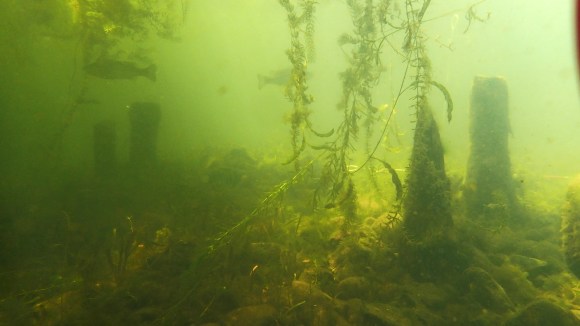
On 4 November, Ei Nakayama of The University of Shiga Prefecture made a historic announcement that eight man-made pillars had been found standing upright at the bottom of Lake Biwa in Shiga Prefecture.
Despite the country’s long history and relatively changeable landscape due to seismic and volcanic activity, this is actually the first time ruins have ever been found underwater in Japan.
■ Lake Biwa
Lake Biwa is the largest lake in Japan and one of the oldest lakes in the world. Due to its location not far from Kyoto and Osaka, it is often referenced in written works dating back hundreds of years. Even today the lake remains a hugely popular spot for camping and cottage vacations.
Due to its notoriety, there are also many folktales of underwater ruins in the area, but little in the way of hard data or evidence of their existence.
■ Lake Biwa Underwater Archeology Research Society
In 1997, Professor Hiromichi Hayashi of The University of Shiga Prefecture began work to find some of these legendary ruins said to be at the bottom of Lake Biwa. By comparing the locations of landmarks and other ruins around the lake, he tried to extrapolate their possible locations in the water.
The problem, however, is far from small, and Prof. Hayashi retired in 2011 without ever finding solid evidence of any ruins. Luckily, his work survived and was carried on by a group of student volunteers represented by the 27-year-old graduate student Nakayama. They call themselves the Lake Biwa Underwater Archeology Research Society.
▼ If you enjoy drawing underwater then the LBUARS may be for you!
■ Lost Shrine
Building on Prof. Hayashi’s work, the team decided to focus their efforts on the area offshore the Nagahama Castle ruins in Nagahama City. It was there that, in August of 2014, the existence of a group of man-made stone columns was confirmed about 100 meters (328 feet) from shore and 1.8 meters (six feet) underwater.
In subsequent studies of the area’s specific environmental and human history the team was able to determine what these columns were and how the arrived at the bottom of the lake.
▼ They also discovered a sweet fishing spot at the ruins site.
In an interesting twist, the ruins are believed to be from a Shinto shrine which housed the god Chinjugami (Tudigong in original Chinese) who protects buildings or areas of land. However, it appears Chinjugami was on vacation when the Bunsei Omi Earthquake hit the area in 1819.
The quake caused soil liquefaction which is when soil loses all stability and begins to act like a liquid. If this happened as evidence suggests it did, the Chinjugami shrine floated off into the lake where it sat, damaged by the earthquake and landslide but undisturbed, for two almost 200 years.
Granted, 200 years isn’t terribly old in the vast history of Japan, but this discovery may be a prelude to many other cultural treasures resting in its many waterways…like my old iPod which I accidentally dropped into the turtle pond in front of Nara Park…
Source: The University of Shiga Prefecture, Lake Biwa Underwater Archeology Research Society, 47 News (Japanese)
Images courtesy Ei Nakayama, The University of Shiga Prefecture

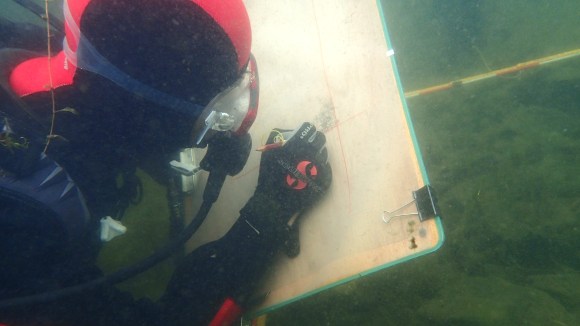
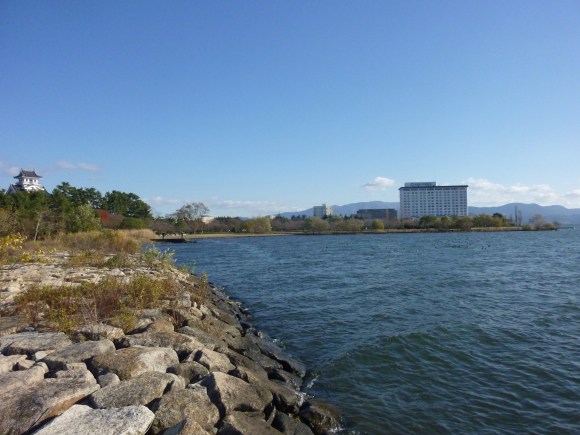
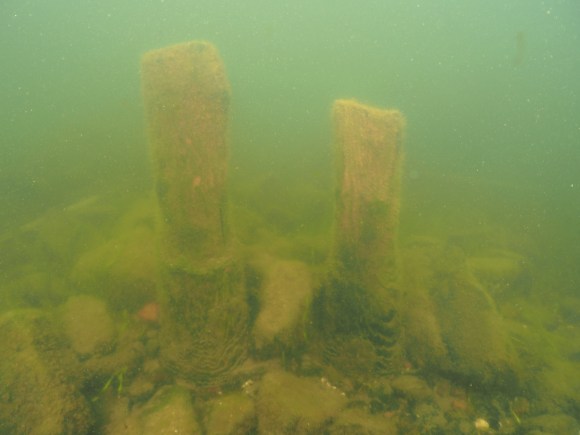

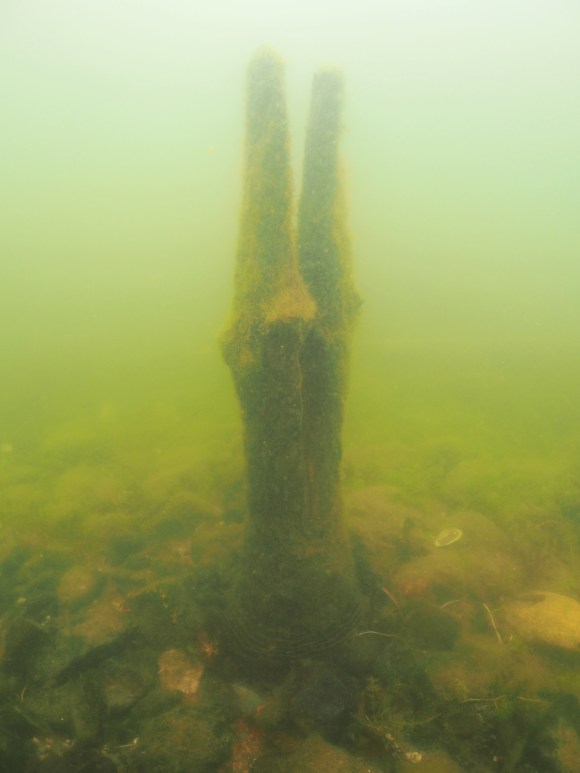
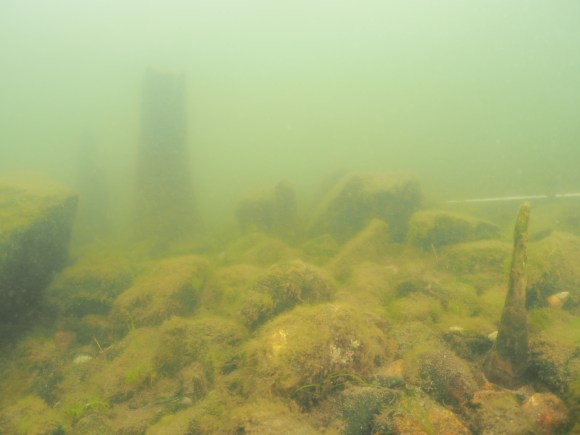
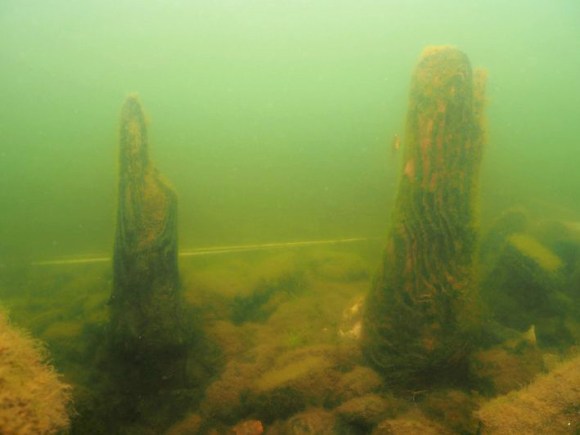
 Suitcase with corpse inside washes up on shore of Japan’s largest lake
Suitcase with corpse inside washes up on shore of Japan’s largest lake Officials in Japan baffled by mystery road someone built inside country’s biggest lake【Video】
Officials in Japan baffled by mystery road someone built inside country’s biggest lake【Video】 Kinki Gyarados! Japan’s central region gets its first Pokémon manhole covers
Kinki Gyarados! Japan’s central region gets its first Pokémon manhole covers Witness the stunning hues of red and blue with Lake Biwa views at Mt. Hakodate’s Kokia Park
Witness the stunning hues of red and blue with Lake Biwa views at Mt. Hakodate’s Kokia Park Biking around Tama Lake: A super-easy, super-relaxing afternoon getaway from downtown Tokyo【Pics】
Biking around Tama Lake: A super-easy, super-relaxing afternoon getaway from downtown Tokyo【Pics】 Ramen restaurant’s English menu prices are nearly double its Japanese ones, denies discriminating
Ramen restaurant’s English menu prices are nearly double its Japanese ones, denies discriminating Rakuten randomly offers 58 New Year’s osechi feasts in Japan, but did we get a star or a dud?
Rakuten randomly offers 58 New Year’s osechi feasts in Japan, but did we get a star or a dud? Here’s what our bachelor writers ate over the New Year’s holiday in Japan
Here’s what our bachelor writers ate over the New Year’s holiday in Japan Majority of Japanese mayors say foreign residents are essential but most see good and bad effects
Majority of Japanese mayors say foreign residents are essential but most see good and bad effects 20 Guilt Free Snacks With Only A Hundred Calories
20 Guilt Free Snacks With Only A Hundred Calories Here are the top ten foodie factory tours for the fall throughout Japan
Here are the top ten foodie factory tours for the fall throughout Japan Tokyo Station’s perfect breakfast spot might just be this izakaya Japanese-style pub
Tokyo Station’s perfect breakfast spot might just be this izakaya Japanese-style pub Cosplay costume room tour by Japan’s number-one cosplayer Enako is an eye-opener【Video】
Cosplay costume room tour by Japan’s number-one cosplayer Enako is an eye-opener【Video】 Lola’s Cupcakes and Magnolia Bakery bring out sakura cupcakes in Japan for a limited time
Lola’s Cupcakes and Magnolia Bakery bring out sakura cupcakes in Japan for a limited time Four Shinto shrines to pray for love at in Japan to start the New Year
Four Shinto shrines to pray for love at in Japan to start the New Year Japanese beef bowl chain Sukiya’s 2026 Smile Box lucky bag basically pays for itself
Japanese beef bowl chain Sukiya’s 2026 Smile Box lucky bag basically pays for itself Starbucks Japan ready to get Year of the Horse started with adorable drinkware and plushies【Pics】
Starbucks Japan ready to get Year of the Horse started with adorable drinkware and plushies【Pics】 Hayao Miyazaki says Happy New Year to Studio Ghibli fans with new art for Year of the Horse
Hayao Miyazaki says Happy New Year to Studio Ghibli fans with new art for Year of the Horse Cup Noodle tries an authentic Jiro-style ramen, but something’s not quite right
Cup Noodle tries an authentic Jiro-style ramen, but something’s not quite right Top Japanese cosplayer Enako returns to Comiket after 6 years, creates mayhem with admirers
Top Japanese cosplayer Enako returns to Comiket after 6 years, creates mayhem with admirers The best Starbucks Japan Frappuccinos we want to drink again in 2026
The best Starbucks Japan Frappuccinos we want to drink again in 2026 We revisited Sweets Paradise after a decade to see if Japan’s dessert buffet still delivers
We revisited Sweets Paradise after a decade to see if Japan’s dessert buffet still delivers That time Seiji called JASRAC to ask why he didn’t get paid royalties for his song being on TV
That time Seiji called JASRAC to ask why he didn’t get paid royalties for his song being on TV Pizza Hut Japan’s hot lucky bags are perfect for a New Year’s pizza party
Pizza Hut Japan’s hot lucky bags are perfect for a New Year’s pizza party 7-Eleven Japan starts new temporary luggage storage service in over 300 branches
7-Eleven Japan starts new temporary luggage storage service in over 300 branches Disillusionment at Tsukiji’s tourist-target prices led us to a great ramen restaurant in Tokyo
Disillusionment at Tsukiji’s tourist-target prices led us to a great ramen restaurant in Tokyo Starbucks teams up with 166-year-old Kyoto doll maker for Year of the Horse decorations【Photos】
Starbucks teams up with 166-year-old Kyoto doll maker for Year of the Horse decorations【Photos】 Tokyo considering law requiring more trash cans following litter increase in heavily touristed area
Tokyo considering law requiring more trash cans following litter increase in heavily touristed area Tokyo’s Tsukiji sushi neighborhood asks tour groups to stay away for the rest of the month
Tokyo’s Tsukiji sushi neighborhood asks tour groups to stay away for the rest of the month Tokyo event lets you travel back in time, for free, to celebrate 100 years since Showa era start
Tokyo event lets you travel back in time, for free, to celebrate 100 years since Showa era start Japan may add Japanese language proficiency, lifestyle classes to permanent foreign resident requirements
Japan may add Japanese language proficiency, lifestyle classes to permanent foreign resident requirements Sanrio theme park in Japan announces plans to expand into a Sanrio resort
Sanrio theme park in Japan announces plans to expand into a Sanrio resort Lacquerware supplier to emperor of Japan and Pokémon team up for new tableware
Lacquerware supplier to emperor of Japan and Pokémon team up for new tableware Survey asks foreign tourists what bothered them in Japan, more than half gave same answer
Survey asks foreign tourists what bothered them in Japan, more than half gave same answer Japan’s human washing machines will go on sale to general public, demos to be held in Tokyo
Japan’s human washing machines will go on sale to general public, demos to be held in Tokyo Japan’s deadliest food claims more victims, but why do people keep eating it for New Year’s?
Japan’s deadliest food claims more victims, but why do people keep eating it for New Year’s? We deeply regret going into this tunnel on our walk in the mountains of Japan
We deeply regret going into this tunnel on our walk in the mountains of Japan Studio Ghibli releases Kodama forest spirits from Princess Mononoke to light up your home
Studio Ghibli releases Kodama forest spirits from Princess Mononoke to light up your home Major Japanese hotel chain says reservations via overseas booking sites may not be valid
Major Japanese hotel chain says reservations via overseas booking sites may not be valid Put sesame oil in your coffee? Japanese maker says it’s the best way to start your day【Taste test】
Put sesame oil in your coffee? Japanese maker says it’s the best way to start your day【Taste test】 No more using real katana for tourism activities, Japan’s National Police Agency says
No more using real katana for tourism activities, Japan’s National Police Agency says Starbucks Japan reveals new sakura drinkware collection, inspired by evening cherry blossoms
Starbucks Japan reveals new sakura drinkware collection, inspired by evening cherry blossoms Updated cherry blossom forecast shows extra-long sakura season for Japan this year
Updated cherry blossom forecast shows extra-long sakura season for Japan this year Japan’s submerged forest gets even more beautiful with Lake Shirakawa spring light-up event【Pics】
Japan’s submerged forest gets even more beautiful with Lake Shirakawa spring light-up event【Pics】 Stinkiest sushi in the world is now an ice cream flavour in Japan
Stinkiest sushi in the world is now an ice cream flavour in Japan Real-life location of Your Name’s anime-only lake discovered, still holds a beautiful surprise
Real-life location of Your Name’s anime-only lake discovered, still holds a beautiful surprise Google Street View catches Russian bear in the middle of snacking on a salmon
Google Street View catches Russian bear in the middle of snacking on a salmon Hokkaido’s Shikaribetsuko Kotan — the beautiful village of ice that melts away in the spring
Hokkaido’s Shikaribetsuko Kotan — the beautiful village of ice that melts away in the spring Nephew receives SD card after his uncle passes away, finds treasure trove of gems from the past
Nephew receives SD card after his uncle passes away, finds treasure trove of gems from the past Where will you go this summer? Here are the top 10 Japanese swimming spots with the nicest water
Where will you go this summer? Here are the top 10 Japanese swimming spots with the nicest water Photos of abandoned power plants in Japan show the hidden beauty in ruins【Photos】
Photos of abandoned power plants in Japan show the hidden beauty in ruins【Photos】 Visiting the burial site of the head of Japan’s most evil demon in Kyoto
Visiting the burial site of the head of Japan’s most evil demon in Kyoto Pre-dawn photo of Mt. Fuji looks almost too beautiful to be real
Pre-dawn photo of Mt. Fuji looks almost too beautiful to be real Real-life Spirited Away train line found in Japan?
Real-life Spirited Away train line found in Japan? Japanese hotel offering sports car touge tours, no Japanese-language ability required
Japanese hotel offering sports car touge tours, no Japanese-language ability required Japan’s “killing stone” splits in two, possibly unleashing evil nine-tailed fox spirit
Japan’s “killing stone” splits in two, possibly unleashing evil nine-tailed fox spirit The most popular places in Japan for viewing sakura in 2024, according to local travel agency
The most popular places in Japan for viewing sakura in 2024, according to local travel agency Mystery “nail house” discovered in Japan
Mystery “nail house” discovered in Japan
Leave a Reply